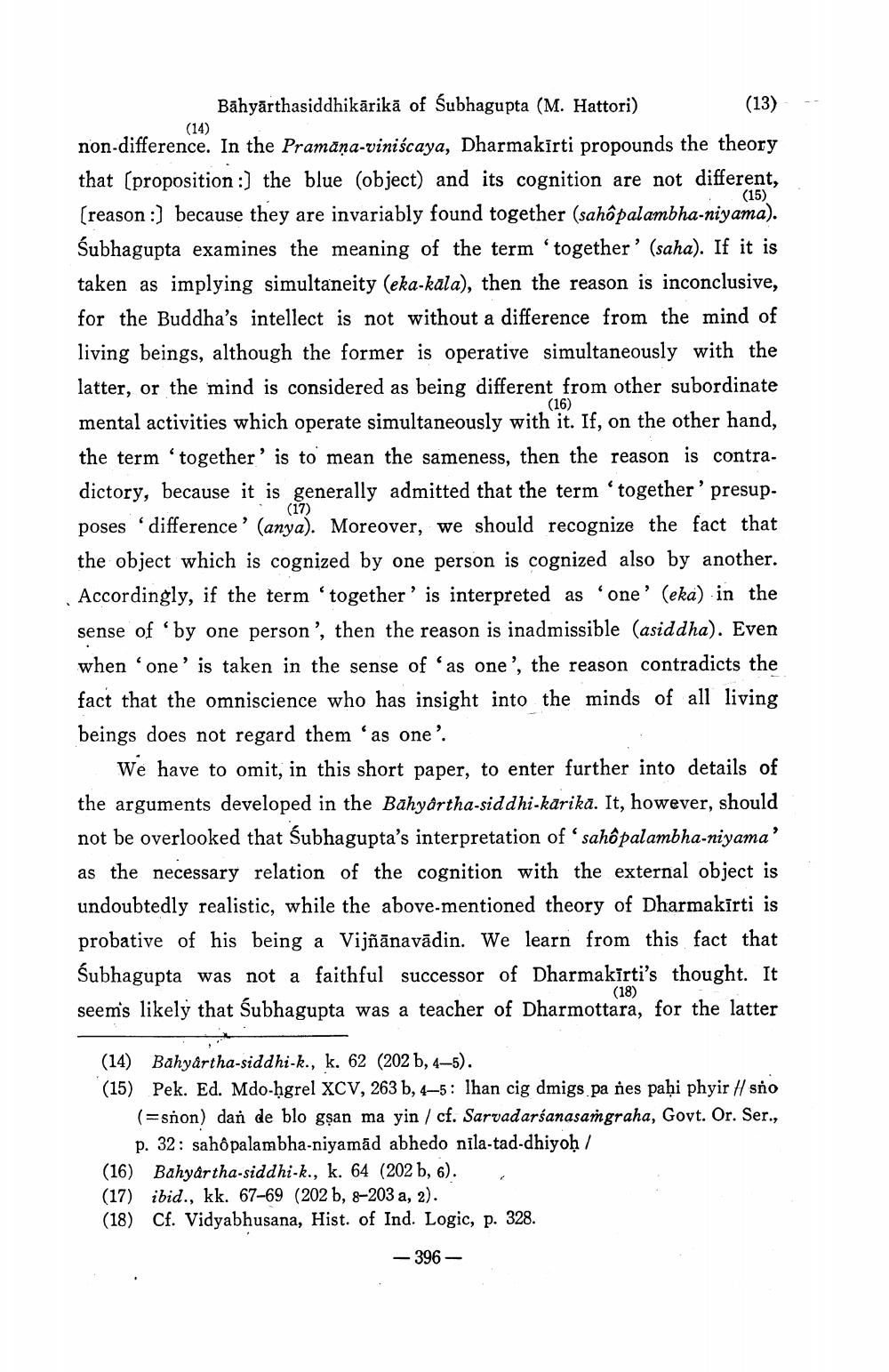________________
(14)
(15)
(16)
(17)
Bāhyārthasiddhikārikā of Subhagupta (M. Hattori)
(13) non-difference. In the Pramaņa-viniscaya, Dharmakirti propounds the theory that (proposition :) the blue (object) and its cognition are not different, (reason :) because they are invariably found together (sahộpalambha-niyama). Subhagupta examines the meaning of the term 'together' (saha). If it is taken as implying simultaneity (eka-kala), then the reason is inconclusive, for the Buddha's intellect is not without a difference from the mind of living beings, although the former is operative simultaneously with the latter, or the mind is considered as being different from other subordinate mental activities which operate simultaneously with it. If, on the other hand, the term 'together' is to mean the sameness, then the reason is contradictory, because it is generally admitted that the term 'together' presupposes difference' (anya). Moreover, we should recognize the fact that the object which is cognized by one person is cognized also by another. Accordingly, if the term 'together' is interpreted as 'one' (eka) in the sense of 'by one person', then the reason is inadmissible (asiddha). Even when 'one' is taken in the sense of 'as one', the reason contradicts the fact that the omniscience who has insight into the minds of all living beings does not regard them as one'.
We have to omit, in this short paper, to enter further into details of the arguments developed in the Bāhyârtha-siddhi-karika. It, however, should not be overlooked that śubhagupta's interpretation of sahộpalambha-niyama' as the necessary relation of the cognition with the external object is undoubtedly realistic, while the above-mentioned theory of Dharmakīrti is probative of his being a Vijñānavādin. We learn from this fact that Subhagupta was not a faithful successor of Dharmakīrti's thought. It
(18) seem's likely that śubhagupta was a teacher of Dharmottara, for the latter
(14) Bahyârtha-siddhi-k., k. 62 (202 b, 4–5). (15) Pek. Ed. Mdo-hgrel XCV, 263 b, 4–5: Ihan cig dmigs pa nes pahi phyir H sno
(=snon) dan de blo gşan ma yin/ cf. Sarvadarśanasangraha, Govt. Or. Ser.,
p. 32: sahô palambha.niyamad abhedo nila tad-dhiyoh/ (16) Bahyartha-siddhi-k., k. 64 (202 b, 6). (17) ibid., kk. 67-69 (202 b, 8-203 a, 2). (18) Cf. Vidyabhusana, Hist. of Ind. Logic, p. 328.
- 396 -




